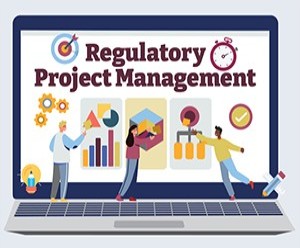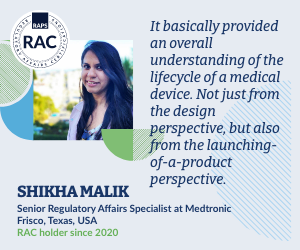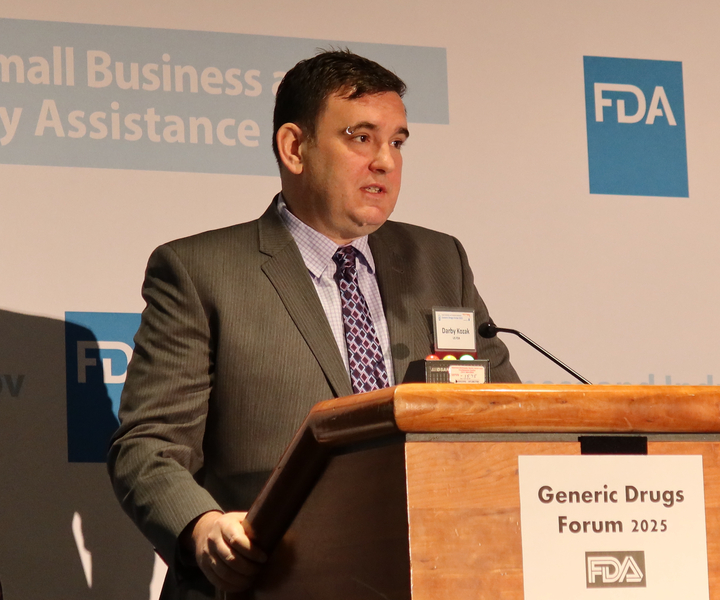FDA finalizes guidance on real-world evidence in drug approvals
![]() Regulatory News | 31 August 2023 |
Regulatory News | 31 August 2023 |
The US Food and Drug Administration (FDA) finalized its guidance for industry on the use of real-world data (RWD) and real-world evidence (RWE) in supporting regulatory decisions for drugs and biologics, offering recommendations for data access and safety monitoring.
The guidance, which was released on 30 August 2023, focuses primarily on non-interventional clinical study designs, such as observational cohort studies and case-control studies. However, it outlines what FDA views as potential uses for RWD in interventional studies conducted under an investigational new drug application. For instance, RWD could be used to identify potential participants for a randomized controlled trial, to select endpoints for study, or as a comparator arm in an externally controlled trial.
The guidance applies to any type of RWD, from registries to medical claims, and includes data on products used in clinical practice under an emergency use authorization, according to FDA.
The agency first addressed these issues in draft guidance issued in December 2021. Following comments on the draft guidance, FDA added clarifying information about the use of existing regulatory pathways for third parties to provide patient-level data to FDA when a sponsor cannot submit the data through traditional channels (RELATED: Convergence: RWE regulatory successes offer lessons for US applications, Regulatory Focus 23 September 2022).
Early consultation and transparency
The final guidance calls for sponsors to consult the agency early in the drug development process if they are planning to use a non-interventional study to support a marketing application.
“Early engagement will help address the appropriateness of using a noninterventional study design and the proposed data sources to address the research question of interest. Additionally, early engagement will allow for timely identification of challenges in the design and planning of a non-interventional study and for discussion of how such challenges might be addressed,” FDA wrote.
FDA recommends that sponsors provide draft versions of their proposed protocol and statistical analysis plan (SAP) for review and comment before conducting study analyses. Also, revisions made to the protocol should be date stamped and sponsors should provide a rationale for each change. As part of the study protocol (or as an appendix), sponsors should describe the data sources that were evaluated when designing the study and provide a justification for selecting or excluding data sources, according to the guidance.
The agency also suggests that sponsors post their study protocol on a public website, such as ClinicalTrials.gov, to ensure transparency.
Part of the early conversations with the agency should include how FDA will access any RWD used in drug development. Sponsors should be prepared to submit patient-level data for RWD that is part of a clinical study that will be included in a marketing application. If the RWD is owned by another entity, there should be agreements in place that allow FDA access to the data. If third parties cannot submit data to FDA through traditional channels, the third-party could open either a pre-investigational new drug application (pre-IND) or a Type V drug master file to provide the patient-level data, according to the guidance.
Study monitoring and safety reporting
Study monitoring should begin at the time of data extraction from RWD sources, with a focus on protecting human subjects and maintaining data integrity, according to the guidance. Minimum requirements for non-interventional study monitoring include:
Final guidance
The guidance, which was released on 30 August 2023, focuses primarily on non-interventional clinical study designs, such as observational cohort studies and case-control studies. However, it outlines what FDA views as potential uses for RWD in interventional studies conducted under an investigational new drug application. For instance, RWD could be used to identify potential participants for a randomized controlled trial, to select endpoints for study, or as a comparator arm in an externally controlled trial.
The guidance applies to any type of RWD, from registries to medical claims, and includes data on products used in clinical practice under an emergency use authorization, according to FDA.
The agency first addressed these issues in draft guidance issued in December 2021. Following comments on the draft guidance, FDA added clarifying information about the use of existing regulatory pathways for third parties to provide patient-level data to FDA when a sponsor cannot submit the data through traditional channels (RELATED: Convergence: RWE regulatory successes offer lessons for US applications, Regulatory Focus 23 September 2022).
Early consultation and transparency
The final guidance calls for sponsors to consult the agency early in the drug development process if they are planning to use a non-interventional study to support a marketing application.
“Early engagement will help address the appropriateness of using a noninterventional study design and the proposed data sources to address the research question of interest. Additionally, early engagement will allow for timely identification of challenges in the design and planning of a non-interventional study and for discussion of how such challenges might be addressed,” FDA wrote.
FDA recommends that sponsors provide draft versions of their proposed protocol and statistical analysis plan (SAP) for review and comment before conducting study analyses. Also, revisions made to the protocol should be date stamped and sponsors should provide a rationale for each change. As part of the study protocol (or as an appendix), sponsors should describe the data sources that were evaluated when designing the study and provide a justification for selecting or excluding data sources, according to the guidance.
The agency also suggests that sponsors post their study protocol on a public website, such as ClinicalTrials.gov, to ensure transparency.
Part of the early conversations with the agency should include how FDA will access any RWD used in drug development. Sponsors should be prepared to submit patient-level data for RWD that is part of a clinical study that will be included in a marketing application. If the RWD is owned by another entity, there should be agreements in place that allow FDA access to the data. If third parties cannot submit data to FDA through traditional channels, the third-party could open either a pre-investigational new drug application (pre-IND) or a Type V drug master file to provide the patient-level data, according to the guidance.
Study monitoring and safety reporting
Study monitoring should begin at the time of data extraction from RWD sources, with a focus on protecting human subjects and maintaining data integrity, according to the guidance. Minimum requirements for non-interventional study monitoring include:
- RWD is accurate and consistent with source records;
- SAP, protocol, and study procedures are followed; and
- Deviations from prespecified plans and protocols are identified and documented, and mediated if necessary.
Final guidance
© 2025 Regulatory Affairs Professionals Society.










![REMS and RMPs [3.0 RAC]](https://my.raps.org:443/images/47c4f18a-2a39-4dfa-85c3-3b384ac4a367.img?resize=yes)


